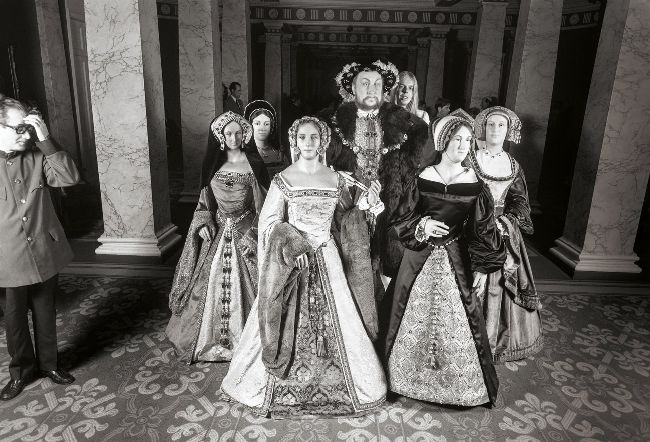Off With Their Heads
In the early 70s, not long after he’d joined Yes, Rick Wakeman turned to the history books for his solo debut, The Six Wives Of Henry VIII. Inspired by the spouses of one of England’s most famous monarchs, the six complex instrumentals had record label execs chewing down their nails and tearing their hair out. In the wake of its 50th anniversary, Wakeman recalls the making of the album that launched his solo career.
Words: Dave Ling Cover Outtakes: Bruce Rae

An outtake from the album cover shoot, which is available as a signed print from www.lucy-bell.com.
“I know Henry was a very naughty boy, but some of the wives were too. It was wonderfully rock’n’roll.”
In 1973, at the age of 24, Rick Wakeman was among the biggest stars in the world of rock music. As a member of Yes, whose fifth album, Close To The Edge, had become a creative and commercial triumph, the classically trained keyboard wizard had paid his dues as a session player, put in the hard miles on the road and stood on the precipice of superstardom. Created against all the odds, his first solo record, The Six Wives Of Henry VIII, was the statement that made him a household name. (Let’s overlook Piano Vibrations, an eminently forgettable 10-song set made by Wakeman for Polydor in ’71 that didn’t even feature his name on the cover.)
By rights, The Six Wives Of Henry VIII shouldn’t have been such a huge success. Wakeman’s record company hated it and they had no problem telling him so. The album was certainly unique, and half a century later its six instrumental songs, each inspired by a celebrated spouse of one of England’s most fascinating monarchs, still stands the test of time. It was also the first extracurricular statement from a member of Yes, with numerous successors of varying quality set to follow.
Having respectfully declined an offer from his friend David Bowie to become a Spider From Mars, at the time Wakeman was extremely content in what would be the first of five spells with Yes. Featuring a solo track from each bandmember, the group’s fourth album, Fragile, had been put together in a hurry, something that irked Wakeman – who once dismissed his submission, an instrumental reworking of the Brahms piece Symphony No.4 (newly titled as Cans And Brahms) as “dreadful” – but Close To The Edge provided the breakthrough that Rick and his bandmates both sought and deserved. The opportunity to spread his wings further came in 1971 when Jerry Moss, then head of A&M Records, offered him a contract to make five solo albums. Wakeman relished the challenge, setting himself to work late that same year.
As one of the most popular and identifiable musicians of the era, bagging the record deal would prove the easy part. Deciding upon the subject matter would be a little more difficult. In the end, inspiration fell into Wakeman’s lap while perusing a book stand at an airport in Virginia during a tour with Yes. Written by Nancy Brysson Morrison, The Private Life Of Henry VIII had been published the better part of a decade earlier. It would prove the best few dollars ever spent by Wakeman.
“You can say that again,” he laughs. “Back then there were no Walkmans or iPods to fill the time on flights, so you’d buy a book. I like my history and that one leapt out at me. I know it sounds daft but when I got the part where Anne Boleyn got stuck in the Tower, a melody came into my head. I always carry manuscript paper with me and I wrote it down. The deeper I got into the book, more things came to mind. I realised the story could make a great album.